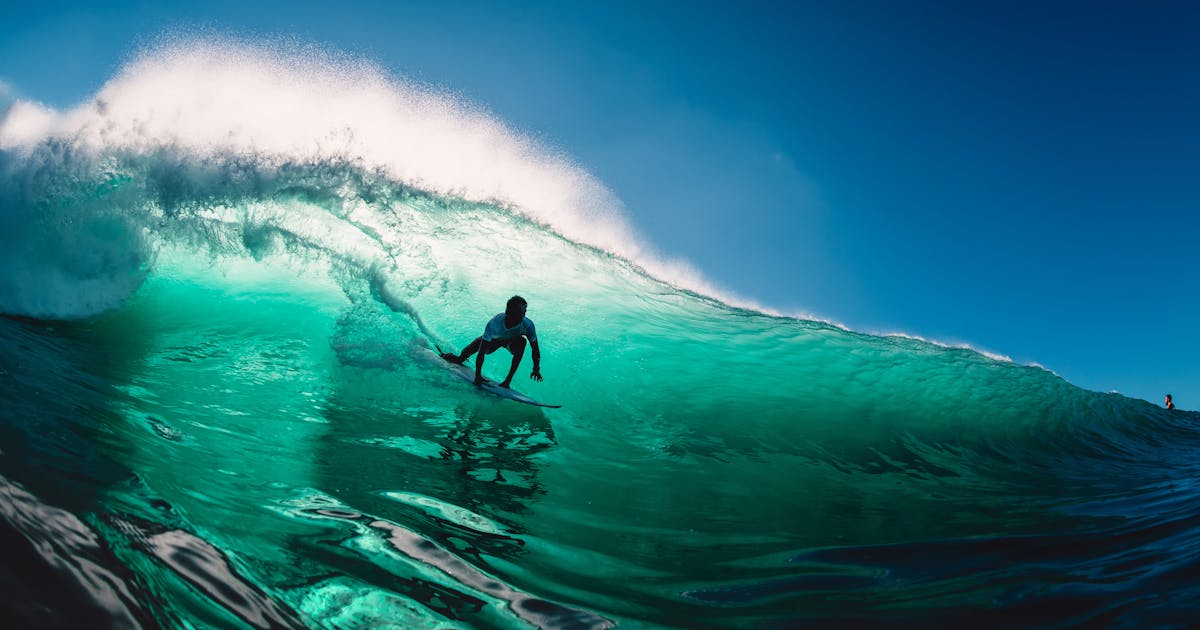Surf breaks worldwide are beloved for their natural beauty and the thrill of riding that next big swell.
Now, groundbreaking new research finds that they are also a powerful ally in the fight against climate change. That’s because thousands of surf breaks worldwide are surrounded by ecosystems that store massive amounts of potentially planet-warming carbon, according to a new study by scientists from Conservation International, Oregon State University, Save The Waves Coalition and others.
Researchers mapped more than 4,800 popular surf spots across 113 countries and found that they store about 88 million tons of carbon — that’s roughly equivalent to the emissions from 77 million gas-powered cars.
It’s the first time the carbon stored in the mangroves and forests surrounding popular surf spots has been measured — bolstering the argument for their protection.
Conservation News sat down with the study’s co-author, Scott Atkinson — a surfer and Conservation International’s Surf Conservation lead — to talk about what the findings mean for protecting some of the world’s best surf spots.
Conservation News: Set the scene — what made you want to explore the connection between surfing and climate change?
Scott Atkinson: We tend to think of surfing as pure fun or as a lifestyle, but what folks may not know is that many of the world’s best breaks are located near mangroves, coastal forests, marshes and seagrasses. Those ecosystems are climate superstars, known to store enormous amounts of carbon. In fact, in a single square mile, mangroves can stash away as much carbon as the annual emissions of 90,000 cars. Not only that — mangroves, forests and seagrasses are also very biodiverse, providing habitats for a wide range of wildlife. So, we wanted to look closer at the areas where surfing, nature and carbon intersect.
Surf spots store about 88 million tons of carbon, equivalent to the emissions from 77 million cars. © Mónika Naranjo González
And what did you find?
SA: Surf breaks, nature and carbon are intimately linked. This research builds on a study we published a few years ago, which found that more than a quarter of surf breaks worldwide are located near critical biodiversity hotspots, yet have no formal protection.
We suspected that surf areas were also important for stashing away carbon, and the data bears that out. By mapping 4,800 surf spots in 113 countries, our research found that surf hotspots sequester a huge amount of carbon, which would otherwise contribute to climate change.
The problem is only 3 percent of surf ecosystems that contain both high amounts of biodiversity and carbon are protected from environmental threats like unsustainable coastal development, habitat destruction, plastic pollution and overfishing. Altogether, less than a third of all surf ecosystems worldwide are protected.
How can this study help?
SA: Our findings strengthen the case for protecting surf breaks and the surrounding ecosystems to safeguard biodiversity and fight climate change. This research can help motivate local, state and national governments to create what are known as “Surf Protected Areas” — surf breaks, and their surrounding ecosystems, that have formal regulations to prevent activities that could negatively impact them. Surfers are natural conservation allies for these efforts. We are passionate, we are engaged — and we are 35 million strong around the world.
We want people to see that the quality of the surfing experience depends on the health of these ecosystems. Outside of the surfing community, that connection isn’t always as clear as it is for other water sports. Take diving for example. Iconic dive spots are typically located on vibrant coral reefs. If a popular reef were to be destroyed, divers would stop going and tourism — along with the revenues it brings — would drop.
With popular surf spots, on the other hand, the coastal areas are so attractive for tourism that the land gets bought up and the ecosystems that support it, like mangrove forests, are often the first to go. Our goal is to shift this narrative so that surfers and surf tourism become a stronger force for conservation of these ecosystems instead.
How is Conservation International helping to protect surf areas?
SA: To date, Conservation International has worked with partners to create 23 Surf Protected Areas in Indonesia and we’re working to strengthen protected areas in Costa Rica, Peru and Brazil. More than 70 surf breaks and their surrounding ecosystems now have legal protection from unsustainable tourism development, coral and sand mining, deforestation, overfishing and other threats that could harm their biodiversity and ability to store carbon.
We’re proud of this work, but it’s just the beginning — we must do more. Climate change, coastal development and sea level rise are all accelerating — and they could alter these irreplaceable surf ecosystems forever. Going forward, the study’s findings will help us target the surf ecosystems that store the most carbon, so we can prioritize our work to have the greatest impact.
As I think about our future and the challenge ahead of us, I’m mindful of where surfing came from. Surfing started with the Hawaiian people, who managed their natural resources and ecosystems so well that they lived in abundance and had free time to surf. The waves weren’t just their playground, they were — and still are — part of the ecosystem and culture that sustained them. That connection is still strong and is inspiring others across the world to connect with the ocean and protect it.
Mary Kate McCoy is a staff writer at Conservation International. Want to read more stories like this? Sign up for email updates. Also, please consider supporting our critical work.
